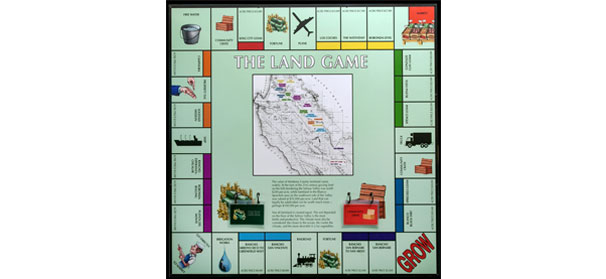

Feb 8, 2013System allows whole-chain traceability of produce
A system developed by Top 10 Produce for smaller farms is now being rolled out at one large Salinas Valley, Calif., operation, using labels that enable whole-chain traceability.
Fresh Roots, which provides produce, branding and logistics for foodservice customers, was doing traceability using pencil, paper and proprietary lot numbers. The system was good enough to comply with federal law – namely, the Bioterrorism Act of 2002, which mandates that companies be able to trace each product one step forward and one step back.
“But what they needed was whole-chain electronic traceability,” said John Bailey, executive director of Top 10 Produce. “They also needed to be compliant with PTI (Produce Traceability Initiative), so that the system they were using would be interoperable with all their different partners. The organizations that are buying from them are now using PTI, so Fresh Roots needed to use that same system. They got that from us.”
Top 10 developed the traceability system for use on small, independent farms. It consists of the label and a hand-held scanner. The extra dimension added for the Fresh Roots system is a QR code that can be read by the scanner or a smartphone. Each code contains a GS1 number that ties back to a specific parcel of land.
There’s a regional identification on the Salinas Valley labels as well, in a concept adapted from vineyard appellations, or grapes grown in specific areas used for wines. The Salinas Valley labels have the words “Blanco Black,” which is also the name of the rich soil found there.
“Blanco Black is the most expensive soil,” Bailey said. “It’s really rich, black dirt. Of course, the label is black and white, so we’re playing off that for the certification mark. People who know better know Blanco Black means good soil. And it’s all about the soil.”
The new traceability system is now in beta testing and will launch fully during the upcoming growing season. It will be available for use on crops when the food buyers ask for it, and that’s a growing list, Bailey said.
The system is also relatively inexpensive, and well within the economics of small- and mid-sized farms.
“Soup to nuts, it costs $1,000 to get a program in place,” Bailey said. “Some microfarms or urban farms might not want to spend it, but few farms in the Salinas Valley can’t afford it. It’s become very inexpensive.”
Fresh Roots field packs its crops, including lettuce and strawberries, and the first traceability labels are applied immediately after harvest. For fresh-cut and consolidation customers, Fresh Roots will apply the labels at the packinghouse.
Fresh Roots has existing procurement contracts with large national restaurant chains that procure fresh produce from more than half a dozen very large growers in the Salinas Valley. Under the new program, it will be able to consolidate orders from these large growers, with the farms in 18 states and Canada that are already using a version of the traceability system for fresh produce and grass-fed beef.
The system has not yet been tested under fire in a food recall incident, but its traceback capabilities did come into play to settle a Perishable Agricultural Commodities Act (PACA) claim, Bailey said. A grower shipped product to a number of distributors, all of whom were satisfied with it except one. When the grower threatened a PACA complaint against the distributor, the grower used a combination of consumer feedback reported at the store and the traceability data to prove the product that came from that grower’s fields was in fact in very good condition when it reached the store. The distributor quickly paid the grower in full, voluntarily, once the data was presented to him, he said.
“There are some legal teeth to this technology that growers are starting to recognize,” Bailey said.
Users of the Blanco Black QR code can use an app to link into a variety of other data, including soil data and others relating to the Salinas Valley. The mark is a certification mark and not a brand; anyone growing produce in the valley can use the code, even growers who grow on areas outside of “the Blanco,” as the area covered by Blanco Black soil is called by locals. Highly prized soils, such as Spreckels loam, Spence loam or King City loam, can be identified by scanning the Blanco Black QR code with a smartphone.
But the ability to trace a product’s progress through the entire supply chain is what makes the system most attractive.
“We can trace lettuce 10 steps forward down the road. You can’t stop us from knowing, because it’s not just the supply chain scanning the data. Even consumers are now scanning labels and putting data back into the system, so we know where the product is at the end of the chain,” Bailey said. “We now have a whole new set of data we’re able to access about where your problems end up.”
By Lee Dean, Editorial Director














